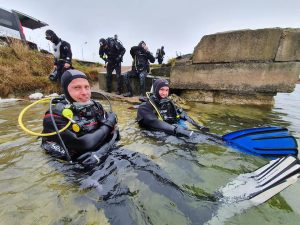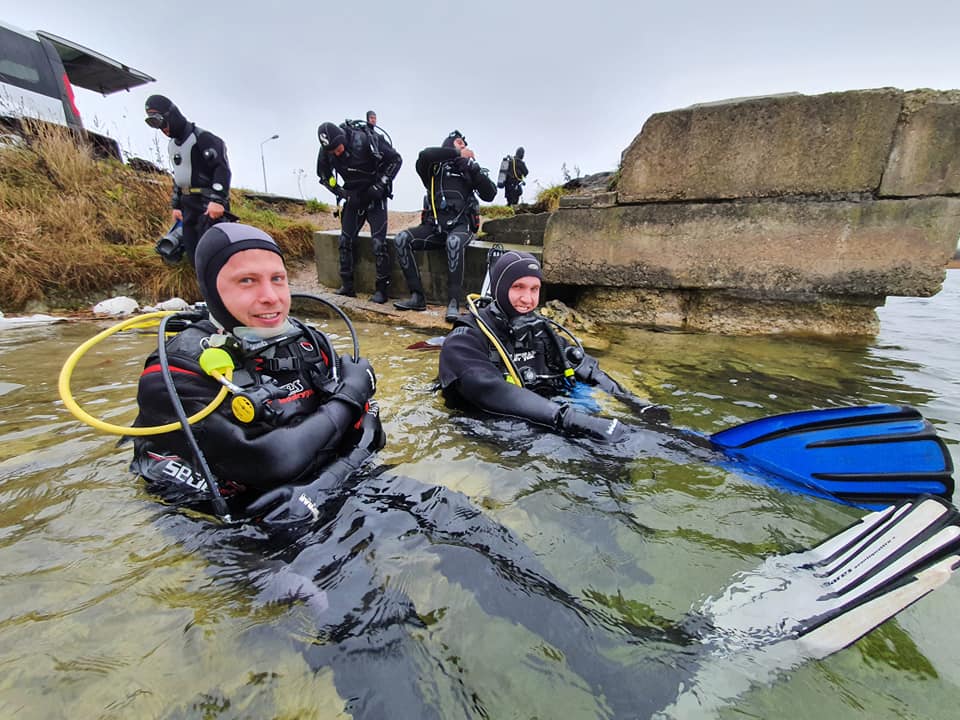When you, as a young diver, tell your friends and colleagues that you have recently dived and are now a certified scuba diver, their immediate response is likely to be intriguing: “Wow. Did you do it? I'm not sure I could do that! "
Table of Contents
Questions about the world of scuba diving, asked by non-divers
Questions and answers about scuba diving are prepared together with diving club diving, diving instructor Walter Preiman. Usually, there are many questions about scuba diving in people that indicate intense curiosity, mixed with concerns and possibly containing quite a bit of misinformation learned from movies. This article answers a number of questions that are most often asked by those who have not yet tried scuba diving. As a certified diver, you become and can consider yourself the primary provider of information to a future diver, friend, colleague or family member who you think could learn diving. By acting as an underwater manager, you could help turn a diver into a new diver - and perhaps your next diving friend.

Is it difficult to learn to dive under the water?
Combining active recreation with diving is easy. As you glide underwater, enjoying the underwater views, you practice only three basic skills: swimming, fluttering, and breathing. Of course, there is much more to the sport of diving - as you become a more skilled diver, you will use equipment and develop knowledge of scuba concepts and safety procedures, but if you can breathe through your mouth, you can probably learn to dive.

It is not difficult for most people to acquire the necessary skills. During the diving training class, you are taught the consequences of high water pressure and safe diving practices. You repeat equipment-related skills in a controlled water environment until you feel comfortable, as well as practice what to do if things fail as planned. The scuba diving balloon and equipment worn by many divers may seem intimidating, but learning to use it is easy. If you have snorkeled, you are already familiar with the mask, snorkel and packs. Scuba diving consists of an air cylinder with compressed breathing air, a buoyancy compensator (BC) shell that helps you swim and stay afloat and maintain the desired depth underwater, and a regulator from which you can breathe. A neoprene suit provides protection and protects you from diving in cold water.
You don't have to be a professional swimmer or athlete to dive, but a certain degree of comfort in the water definitely helps. Even if you attend scuba training with less confidence in your water swimming skills, by the time you receive your first diving certificate, your level of comfort will increase significantly. Learning to dive underwater is mostly a matter of attitude. If you are motivated to walk through the door in an exciting new world, then the experience will prove both energy and confidence.
Does diving pressure harm the ears?
This question mainly arises for people who have snorkeled and tried to dive under the surface without diving. They fly with their head down to about (2 m) and suddenly a tight feeling appears in their ears, which turns into stabbing pain, forcing them to return to the surface. The ignorant thinks they have ear problems that prevent them from diving.
On the contrary, the problem is a lack of knowledge about the effects of pressure and can be easily remedied. If you are flying in an airplane without serious discomfort to your ears, your ears should not be an obstacle to diving.
As the water pressure increases, it pushes inwards on your eardrum and the surface pressure in the middle ear changes, causing a feeling of discomfort. The protection is to equalize the pressure on both sides of the eardrum by opening the eustachian tubes that run from the back of the neck to the middle ear.
Pressure equalization in the ears
This is done by squeezing the nostrils, lifting the chin and gently trying to blow through the nose. Try to equalize the pressure in your ears now and now. You should hear a small click or a crackling sound in both ears - the eustachian tubes open. Some divers can achieve pressure equalization by simply moving their jaw or tongue.
When diving, it is usually easier to straighten your ears by diving with your head down. The reason is that scuba divers are taught to descend on foot first (the air moves up more easily than down) and level off "early and often". If your ears are not filled with cold or allergy symptoms, or if you are one of the few people born with narrow eustachian tubes, ear pain will no longer be a problem. Scuba divers trained in scuba diving courses know that if you sometimes have difficulty cleaning your ears, it's time to skip scuba diving until the congestion subsides.
What can be seen underwater?
A completely new world of incredible views awaits divers, regardless of the underwater environment - fresh or salt water; tropical or temperate zone; ocean, quarry, lake or river.
It shouldn't be hard to imagine how you effortlessly glide through the crystal clear tropical ocean, enjoying the rainbow-colored fish that live around the dynamic coral reef. We’ve all met underwater scenes like television, movies, or maybe a friend’s underwater video. You may have even noticed a direct glimpse of snorkeling in the Mediterranean and Red Sea.
But unless you spend time underwater, you can't appreciate the richness and diversity of life on the coral reef. Fish are the most recognizable inhabitants, but they represent only a fraction of all reef animals. Sponges grow in strange shapes, often reminiscent of vases or organ tubes; anemones and feather stars extend tentacles, such as delicate flowers; soft corals mimic the bushes that flutter in the breeze. Even the corals that make up the rocky reef are actually colonies of thousands of individual animals. And not to mention cryptic crabs, wavy sea snails and spiral Christmas tree worms.
Why does a diver have to wear a weight belt?
Believe it or not, the human body is quite floating. If your lungs are full of air, you would have a hard time drowning, especially in salt water. That's why most people have no problem snorkeling - when you lie on the surface with your head in the water, your weight is easily supported, whether you weigh 45 kg or 130 kg.
Add underwater equipment and you will become even more floating. Although underwater balloons will sink when full, divers wear buoyancy compensators (BC), vests that not only secure the tank to the back of the diver, but also contain inflatable air bubbles to ensure flotation on the surface. The wetsuits are made of neoprene, a type of rubber that contains thousands of tiny air pockets. These air cells provide insulation to prevent heat loss and provide significant buoyancy.
Even with all the air removed from the BC, a diver usually cannot sink without weight. Lead can be strung in blocks on an easily retractable weight belt worn around the waist or wrapped around the belt in a removable weight belt bag. Divers try to carry as little weight as necessary to allow them to land effortlessly on the surface, and they remain slightly negatively floating throughout the dive. (Divers add a small amount of air BC underwater to maintain neutral buoyancy at depth.)
The amount of weight carried varies from a few kilograms (2-4 kg) to more than (14 kg) depending on various factors. For example, salt water is denser than fresh water, so about 2.5 percent more weight is needed. A neoprene suit is a form of thermal protection, underwater equipment, diving conditions and an individual's body composition also affect the optimal amount of weight. Divers regularly adjust the weight, weight and placement of their diving belt.
PADI Diving Courses - Going Further Deep
If you want to dive deeper than 18 meters, register PADI diving course. A PADI instructor can teach you:
- First aid
- Search works underwater
- Decompression procedures
- How to use specialized air mixtures 21-40% oxygen
- Wreck diving, safe entry and cave diving
- How to use diving freebie, double cylinder or side-mounted cylindersto extend the time under water

